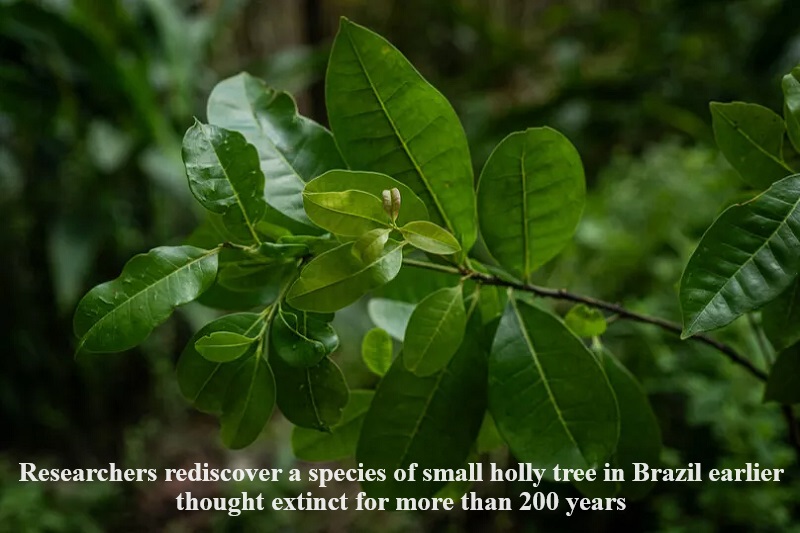
Researchers have made a remarkable rediscovery of a species of small holly tree in Brazil, a species previously believed to have gone extinct for over two centuries.
This tree was stumbled upon during an expedition initiated six days ago in the urban city of Igarassu, located in the state of Pernambuco, Brazil. The tree, scientifically known as ‘Ilex sapiiformis’ but also referred to as the Pernambuco holly, had been classified as “one of our top 25 most wanted lost species” by Re:wild, the conservation organization spearheading the expedition.
Scientists have characterized this discovery as an “incredible find” and noted that it marks the ninth rediscovery of a “most wanted lost species” since the launch of the Search for Lost Species initiative in 2017, as mentioned on Re:wild’s Instagram.
Re:wild, in collaboration with the International Union for Conservation of Nature (IUCN), has compiled a comprehensive list of more than 2,200 missing species across 160 countries. This list includes species that have been absent from scientific records for at least a decade, with many believed to have been extinct for significantly longer periods. Thus far, the team has successfully rediscovered at least eight of the top 25 most wanted animals and plants.
The identification of the Pernambuco Holly trees was made possible through the observation of their petite white flowers, as reported by Euronews. The location where the tree was rediscovered has undergone urbanization in recent decades, but it was once home to lush tropical forests.
Juliana Alencar, a member of the project team, expressed the astonishment of discovering a species that had not been documented for nearly two centuries, describing it as an “incredible moment.”
Looking ahead, the expedition’s leader, Gustavo Martinelli, has announced plans for a breeding program to help the Pernambuco Holly reclaim its historical significance. According to Re:wild, the search for additional Pernambuco Holly trees is ongoing, with the team aiming to collaborate with local partners to protect the forests where the species was rediscovered and establish a captive breeding program to ensure its conservation.

Post Your Comments